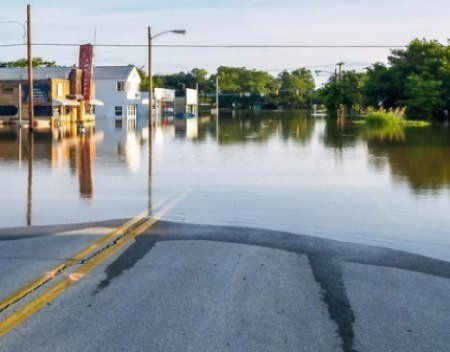
Simple Flood Insurance Tips You Should Know
Floods are the most common and costly natural disasters in the United States, yet many homeowners remain underinsured—or worse, not insured at all—against flood damage. Understanding the key aspects of flood insurance can help you make informed decisions and protect your home, your belongings, and your finances. Here are the most important things to know.
One of the biggest misconceptions is that standard homeowners insurance covers flood damage. It doesn’t. If a flash flood, storm surge, or overflowing river damages your property, you’ll need separate flood insurance to cover repairs and replacement costs.
This makes purchasing flood insurance essential if you live in a flood-prone area—or even if you don’t. According to FEMA, more than 20% of flood insurance claims come from areas considered low to moderate risk.
Flood insurance is available through the National Flood Insurance Program (NFIP), managed by FEMA, and also through a growing number of private insurance companies. NFIP policies offer up to $250,000 in building coverage and $100,000 in contents coverage, but private insurers may offer higher limits and broader protections.
If your property value or contents exceed NFIP limits, you may want to consider excess flood insurance from a private provider.
Don’t wait until a storm is in the forecast to buy flood insurance. NFIP policies typically come with a 30-day waiting period, meaning your coverage won’t kick in until a month after purchase. There are a few exceptions, such as when coverage is required for a mortgage closing, but in general, you’ll want to plan ahead.
Flood insurance policies typically include two separate components:
Building Property Coverage: This protects the physical structure of your home, including electrical systems, plumbing, and appliances.
Personal Property Coverage: This covers your belongings—like furniture, electronics, and clothing—up to the policy limits.
When buying a policy, make sure you purchase enough coverage for both your home and its contents.
Flood insurance is designed to cover specific types of water damage. However, not everything is included:
Damage caused by moisture, mildew, or mold that could have been prevented is often excluded.
Temporary housing costs or business interruption are not covered under NFIP policies.
Basements have limited coverage under NFIP rules; items like flooring, drywall, and personal belongings stored in a basement may not be reimbursed.
It’s essential to read your policy carefully or speak with your insurance agent to understand what is—and isn’t—covered.
Your property's location determines whether you're in a high-, moderate-, or low-risk flood zone. If you live in a high-risk area and have a government-backed mortgage, flood insurance is mandatory. In low-risk areas, it’s optional—but still highly recommended.
Premiums are based on your flood zone, home elevation, construction details, and coverage amount. FEMA’s new Risk Rating 2.0 pricing model also adjusts premiums based on individual property risk factors, not just flood zones.
Flood insurance is a critical layer of protection for homeowners and renters alike. As climate change increases the frequency and severity of storms and flooding events, having the right coverage can make the difference between financial ruin and a secure recovery.
I have no problem giving you an A1 reference for taking care of the flood policies for me and Diane. I appreciate you working with the mortgage company: the surveyor and our previous agent. The result was a 75% reduction in our flood insurance premiums!
I have known Tim for many years and he is a man with great integrity, work ethic and one of the nicest persons I know. Over the years Tim has provided insurance counseling and advice to our company, for myself personally, as well as to our clients. Recently Tim, took time to analyze our flood insurance policy and he was able to make some excellent recommendations. Our flood insurance costs are now less and we have much better coverage. I recommend Tim to anyone without hesitation or reservation.
We contacted Mr. Holt for an estimate via email over the weekend prior to a closing on a property, hoping for a response on the following Monday to take with us with confidence in being insured at the settlement table on a Tuesday. He exceeded our expectations not once but in readily responding to the initial request and then to follow-up questions all during the weekend frenzy that occurs before closing. "Impressive and responsive customer service," for sure!